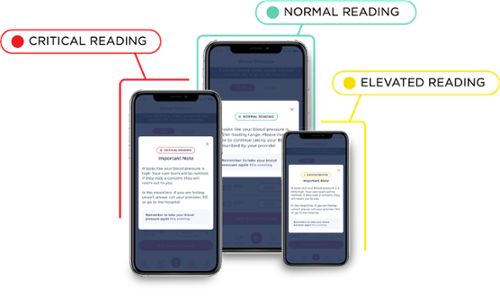The healthcare space is not a likely candidate for digital disruption. It’s highly regulated, and resists the rapid pace of innovation. The incumbents are massive corporations with years of experience and multiple services. The government is the biggest buyer — healthcare isn't a market-driven industry that responds to cheaper and faster.
In the face of those challenges, it’s critical that startups are in it for the long haul, to solve problems in niche areas and prove that they are doing it successfully with demonstrable outcomes. It’s not about disrupting the industry, it’s about working within existing systems to achieve better results than existing standards.
Babyscripts saw that opportunity in maternity care. Birthing mothers represent a niche population that has been grossly underserved by traditional methods of care delivery in the United States, with rising maternal death rates reflecting wide racial and social inequities.
Challenging conventional wisdom
The current structure of pregnancy care began with the issuance of the IOM study in 1985, which called for increased prenatal visits (12-14) as a mechanism to reduce low birth weight. Yet 37+ years on, though the number of visits has increased, the rate of low birth weight babies has not decreased. Furthermore, the proliferation of “maternity care deserts” — areas where over 7M women in the US have little or no access to obstetrical care — has demanded an alternative to in-person care.
Compiling standards for digital tools
There is no magic in the numbers 12 or 14 (or 6 or 7 for that matter)— reducing the number of in-person visits does not show a statistically significant difference in maternal and fetal outcomes. However, a reduction in visits was shown to potentially impact patient satisfaction and provider-patient intimacy. Furthermore, access to prenatal care is a significant indicator of childbirth outcomes, while availability of postpartum care is a strong predictor of long term health of mother and child.
So while traditional maternal healthcare clearly can’t support women across underserved areas, digital health tools proposed to close the gaps have to both maintain and support the patient-provider relationship and find a way to deliver robust virtual prenatal and postpartum care that is connected to the provider.
The clearest way to evaluate digital health tools is through outcomes data.
Clinical and real-world validation
Numbers and percentages can easily be manipulated to tell a better story, so it's imperative that a digital tool demonstrate quantifiable outcomes with full transparency about data collection methods, patient analytics, and study conditions.
Babyscripts has a robust research portfolio that sets it apart from other tools in the space. It’s the only app to be evaluated for its effectiveness in diagnosing hypertension. In another patient trial, participants reported feeling more knowledgeable about their pregnancy and more connected to their care provider with Babyscripts. A follow-up randomized control trial showed that Babyscripts reduced in-person visits with no reduction in patient or provider satisfaction.
As important as published research studies are, insights from data collected in real-time, in unmonitored environments, are also critical for evaluating the effectiveness of a solution. Babyscripts has practice data from over 8 years of working in the space, showing high levels of engagement with mobile tools and remote monitoring, improved adherence to HEDIS measures, earlier identification of preeclampsia, fewer preterm births, a reduction in C-sections and readmissions, with patient stories highlighting the individual value of the solution in various use cases.
Any tool being considered to solve a problem should be able to offer clinical and real-world data that supports its benefits for the patient population. In an oversaturated market, it’s critical to look for these differentiators, and to look closely at the evidence and methods behind the outcomes data.



Submit a comment